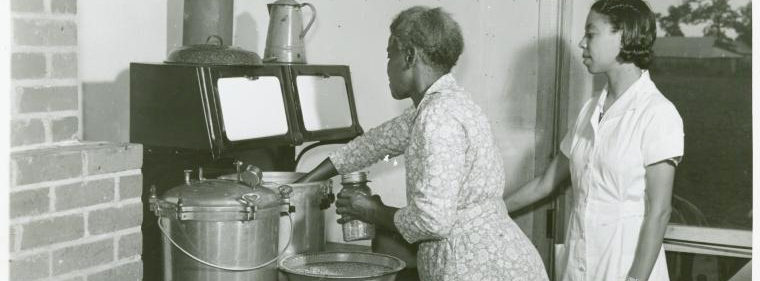by Dana Leilehua Yuen
Water Bath Canning
Water bath is a great canning method for high-acid foods, like tomatoes. Here is a good resource for starting out: South Dakota State University Health and Nutritional Sciences Dept.
Pressure Canning
My mother, Geraldine, was terrified of pressure cookers and canners. Each of her older sisters had exploded a pressure cooker, and so Geraldine would not touch them. She also was terrified of “the botchies” (botulism), and so did not do water bath canning, either.
I, however, love to can food. There is something incredibly satisfying about looking at a pantry that is well-stocked with food you have prepared yourself. You know what is in each can, that there are no artificial ingredients, no excess sugar or salt, just what you put in there. And, after the initial investment, it is far more cost effective. For one thing, you are no longer paying a shipping company to truck all that metal and water from the processing plant to your grocer.
First, know the difference between a pressure cooker and a pressure canner.
Both pressure canners and pressure cookers work by trapping steam and building up pressure inside a pot. The steam is trapped because the lid, which is fitted with a flexible gasket, forms an airtight seal once locked into position. As the contents of the pot heat up, steam is trapped inside and pressure builds. At 15 pps (pounds per square inch) pressure, water boils at 250°F, which is almost 40°F higher than in a regular pot. thus the food cooks far more quickly. The high pressure and temperature also kill bacteria and, in canning, helps prevent spoilage.
You can cook in a pressure canner. You can’t can in a pressure cooker.
Pressure cookers are wonderful. Their speedy cooking saves time, helps retain nutrients, and the new programmable ones are an awesome help in the kitchen. They are not designed to safely can foods. A pressure cooker is designed to heat, cook, and cool quickly so that you can get dinner on the table. This is one of my favorite electric versions. I like it because I can program it, and it frees up my range top for cooking other things.
A pressure canner tends to be more heavy duty, and is designed to heat and cool more slowly to prevent shattering the canning jars, and to hold the temperature long enough to destroy pathogens as well as drive out air from the canning jars to create a hermetic seal.
The All American is my dream canner. But the Presto canners are a good value and will do a decent job. It’s just that your grandchildren probably will be able to teach their kids to can with an All American, but not with the Presto.
No matter which canner you choose, to keep from running into problems with it, the easiest thing is to run your checklist every. single. use.
Make sure all ports/vents are scrupulously clean. Make sure the sealing ring gasket is scrupulously clean. Make sure to follow all instructions. If it gets dented, it becomes a stock pot.
Never, ever force the lid on or off. If it sticks going on, gently jiggle it until it settles in. If it sticks coming off, there is probably still some pressure. Make sure it has completely vented and cooled. There is usually a little pop-up valve, like on a turkey. When the valve drops back down and you can jiggle it without it hissing, the pressure should all have vented.
Never let it run dry.
It seems complicated at first, but after a few times, it will be second nature.
Every accident in my own family was a result of the lid being seated improperly, or overpressure due to a dirty vent.
Each of my aunts blew up her pressure cooker – they overfilled and the scum boiled up and blocked the vents, resulting in over-pressurization.
You can do it! Just take your time, and carefully follow the directions. Once you have it down, it is super satisfying to see all those rows of beautiful jars filled with yumminess YOU prepared!
This is the best place I know of to start: National Center for Home Food Preservation
For some history on canning, visit this page by the USDA.


